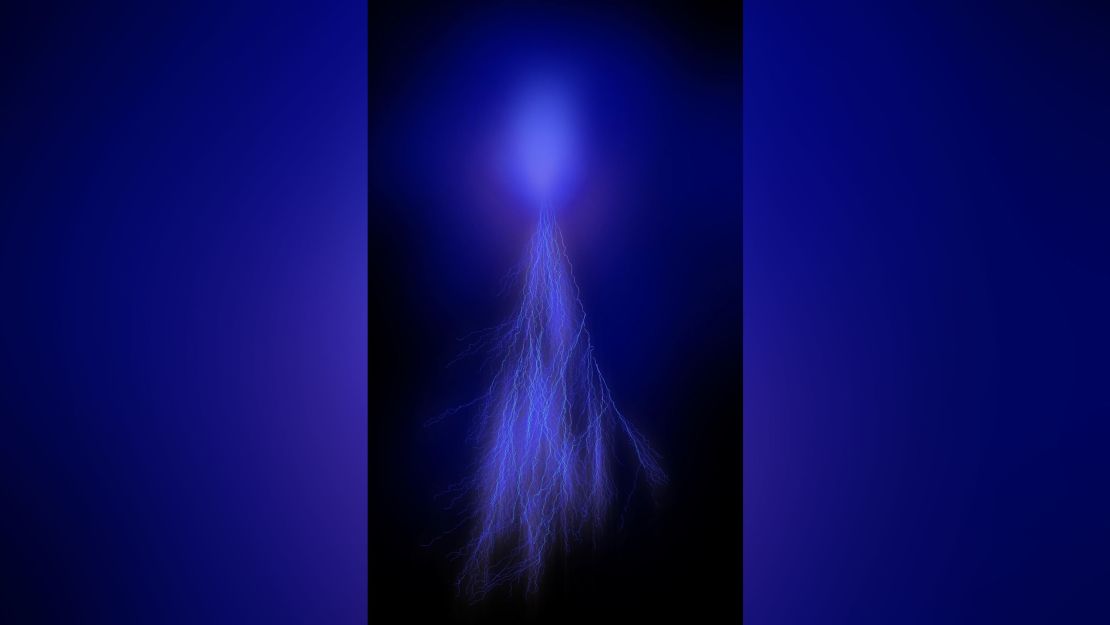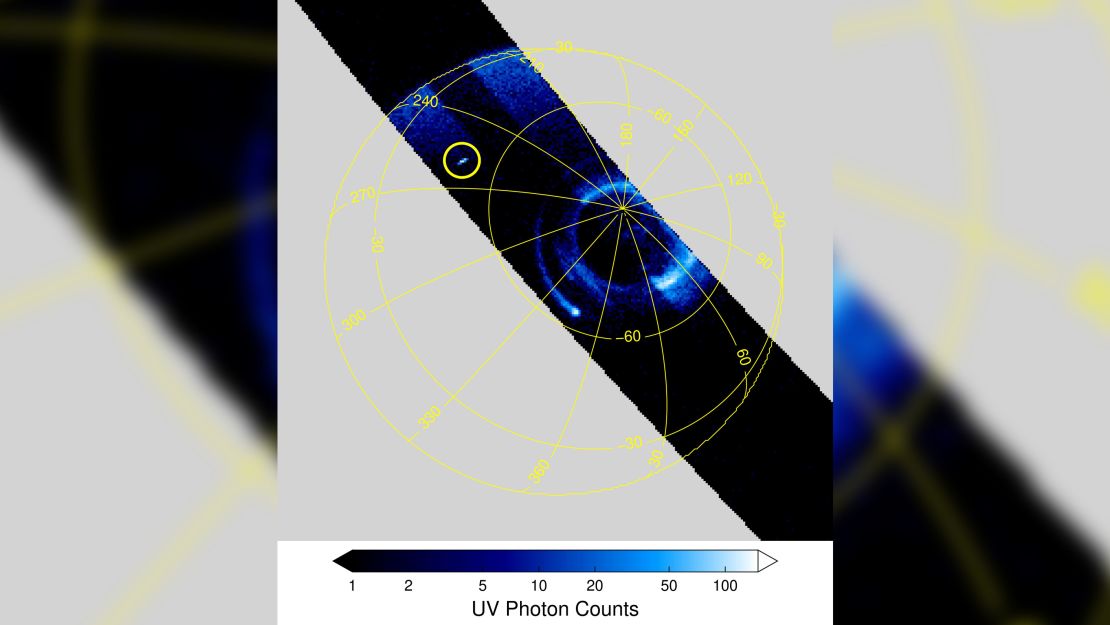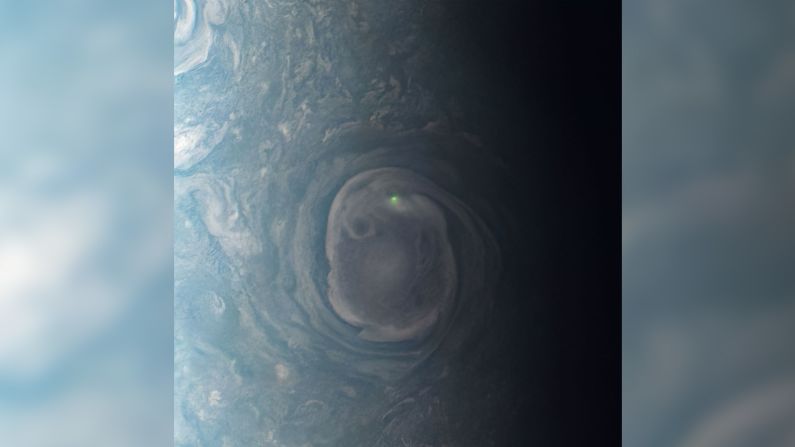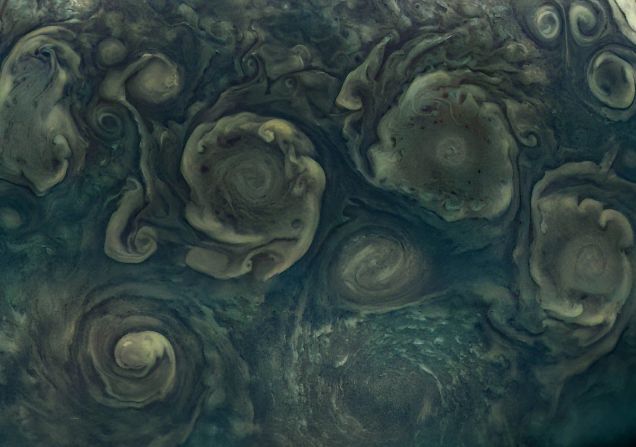Blue sprites and elves have been detected twirling in the upper atmosphere of Jupiter by NASA’s Juno mission. While it may sound like something out of a fantasy novel, sprites and elves are actually two types of quick, bright flashes of light, or transient luminous events.
Although these lightning-like flashes happen on Earth, this marks the first time these luminous events have been spotted on another planet.
In European mythology, sprites are clever, fairy-like creatures. In science, they’re bright centers of light that are triggered by lightning and occur far above thunderstorms.
These phenomena occur on Earth, usually about 60 miles above large thunderstorms. Althoughthe light fromsprites brightening the sky can span 15 to 30 miles across, these flares last for just milliseconds. The shape of these flashes, like a jellyfish, extends both up and down toward the ground.

Elves, or Emission of Light and Very Low Frequency perturbations due to Electromagnetic Pulse Sources, are also quick flashes of light. They can brighten a larger area of the sky that can stretch as far as 200 miles across, and their shape looks more like a flat disk.
“On Earth, sprites and elves appear reddish in color due to their interaction with nitrogen in the upper atmosphere,” said lead study author and Juno planetaryscientist Rohini S. Giles, in a statement. “But on Jupiter, the upper atmosphere mostly consists of hydrogen, so they would likely appear either blue or pink.”
The study published Tuesday in the Journal of Geophysical Research: Planets.
While scientists predicted Jupiter’s turbulent atmosphere and massive storms could support the presence of these luminous events, they had never been observed.
The Juno mission went into orbit around Jupiter, the largest planet in our solar system, in 2016. Since then, it has helped to rewrite much of what scientists previously understood about Jupiter. So far, Juno has conducted 29 science flybys of Jupiter with its instruments on and collecting data about the planet.
Among the spacecraft’s instruments is an ultraviolet spectrograph, or UVS, that images Jupiter’s auroras in ultraviolet light.

But Juno’s team also believes the instrument has captured evidence of sprites and elves in Jupiter’s upper atmosphere. Theresearchers spotted a disappearing bright flash of light in the ultraviolet data during the summer of 2019.
“UVS was designed to characterize Jupiter’s beautiful northern and southern lights,” said Giles, postdoctoral researcher at the Southwest Research Institute in San Antonio. “But we discovered UVS images that not only showed Jovian aurora, but also a bright flash of UV light over in the corner where it wasn’t supposed to be. The more our team looked into it, the more we realized Juno may have detected a (transient luminous event) on Jupiter.”
Juno has captured 11 of these bright flashes so far occurring in Jupiter’s upper atmosphere over a region where intense lightning-filled thunderstorms form.
Jupiter is known for lightning that is hundreds of times more powerful than any strikes that occur on Earth. But researchers were able to determine that these flashes were not lightning because they were detected 186 miles above where much of Jupiter’s lightning forms.
“We’re continuing to look for more telltale signs of elves and sprites every time Juno does a science pass,” Giles said.
“Now that we know what we are looking for, it will be easier to find them at Jupiter and on other planets. And comparing sprites and elves from Jupiter with those here on Earth will help us better understand electrical activity in planetary atmospheres.”



































